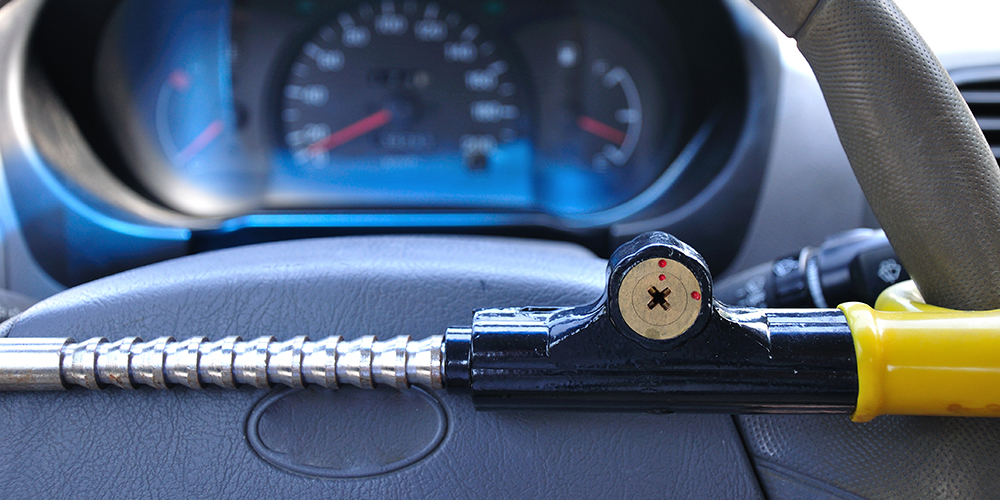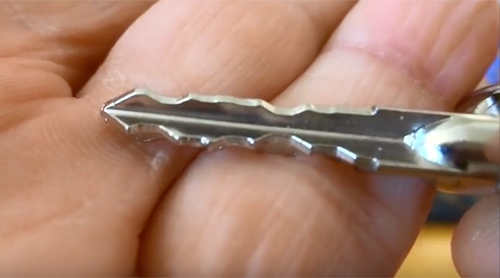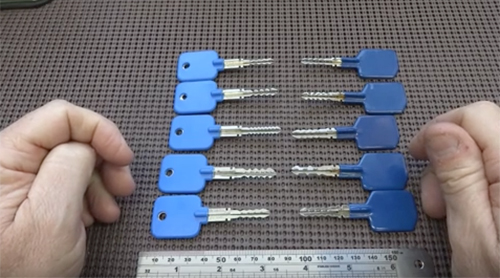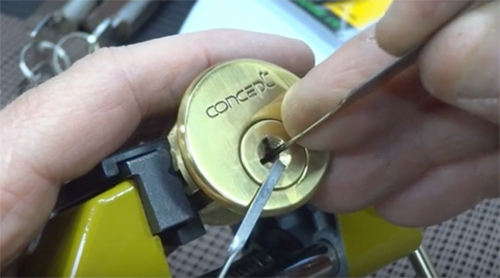Lock Blog
A resource for consumers, locksmiths, and security professionals
A resource for consumers, locksmiths, and security professionals

The cruciform lock is known by many names. They are called cross locks and Zeiss locks. With the exception of “Zeiss”, the names refer to the shape of the key and keyway. It looks like it would fit a Phillips head screwdriver. I mean you can look at the pictures, but it looks like a plus sign (+). It is a cross, hence the name cross lock. And cruciform means, “forming or arranged in a cross”. The meaning of Zeiss still eludes me. The etymology has to do with optics more than it does with locks. Chances are it has to do with Zeiss-Ikon, which is a lock manufacturer, but I cannot confirm that. Personally I think cruciform is the coolest sounding name of the three (if you agree with me, leave a comment below). More than the name, what makes this lock special? Is there anything unique about its configuration? Can it be picked? And how? Once you understand it you can make an informed decision on whether you would want it protecting you and your valuables.
You will most commonly see cruciform keyways on steering wheel locks. They also appear on safes from time to time, but that is one of the things people don’t know about safes. The extremely popular, but ultimately poor company, SentrySafe, has been known to use them. This type of safe key may be the only way to open the safe, or it may be an override in case you forget the combination. Their oddity and lack public use gives them an air of mystique. This effect is similar to what we have seen with tubular and barrel locks. When the average person is unfamiliar with the lock type the public consensus tends to revere it as high security. In other countries, cross locks have been commonly used throughout the history of padlocks and door locks. So if you ever find yourself traveling abroad keep an eye out.

Cross locks still work off of the pin tumbler system. They are generally perceived as being more secure because of the four shear lines. As you can see with the lock’s keyway, as well as the key itself, it has a cross shape. Each groove on the key corresponds to a set of pins. There are commonly multiple shear lines, but this is not always the case. The average minimum number of pins, for a well-constructed Zeiss lock, is 16. Some higher security locks may have a total of 20 pins (five on each side). The more pins there are, the longer it will take to work your way through picking the lock. Finding the binding pin among 20 pins and 4 shear lines can take quite a bit of time if the picker is not experienced with cruciform locks.
Not every side of the key is always bitted. Sometimes there is a side that acts as a guide. Key orientation plays a very small part in the overall protection of this type of lock. Most often they have a notch on the key and lock face that tell you how to orient it. Because it is a cross shape it could go in one of four ways, but it will only open with the correct one. On very cheap Chinese made cruciform locks there may only be one set of active pins. The idea being that you still have more security than a standard pin tumbler because the key might be placed in the lock incorrectly. This truly relies on security through obscurity. Probing the keyway with any instrument would expose the lack of pins immediately.
There are three common ways to pick a cruciform lock:
This lock pick consists of five main components. The main parts of the pick tool are:
Tines – Four pick wires (tines) fitted with tips similar to a half diamond. The main difference is that the point, of what would be the diamond, is rounded. These are often made out of very cheap metal and break very easily.
Tension prongs – Four bars that catch in the keyway so that the lock is tensioned when the device is turned.
Tension wheel – Turns the device so that the lock is tensioned.
Plunger – Moves the tines in and out of the lock. This rakes each keyway simultaneously.
Threaded Shaft and Shield – Supports the tension prongs by choking up against the face of the lock. Without this support, the prongs will break easily and more often.
These are usually cheaply constructed. The tines will break, and/or the tension prongs will break, and then the device will be useless. The keyways can vary in size quite a bit, which may present an issue with some cruciform specific picks that you might have in your lock pick set. Make sure that the tension prongs fit the keyway. They may be too wide or too narrow. If the prongs do not fit then you will need a different lock pick.

Cruciform tryout keys are not very effective. I have seen them work and I have seen them fail. Personally I believe that they are too unreliable. They can be used as a rake or as a tryout key. Raking with the key acts similarly to lock bumping. The key is moved out of the lock by a click and then pushed in and turned simultaneously. I have yet to see the tryout key method work, but it meant to turn in the keyway as if it were the key. I would recommend staying away from these unless you find some very convincing evidence from a source you can trust. Similarly, I would be willing to update this post to reflect a more balanced opinion if anyone has any evidence they would like to share with me. I have seen homemade cruciform rake keys made for specific brands and models, but because of the wide array of keyways on these type of locks, I doubt they are anywhere near universal.

With SPP’ing (Single Pin Picking), it can be quite difficult to tension the lock. Assuming that all four sides have active pins, the wrench will block access to one set of pins. Even if they do not have four shear lines, finding a tension wrench that is the appropriate size may prove difficult. Your tension wrench will undoubtedly fall out a few times. Once the lock is tensioned properly you will need to pick the lock similar to SPP’ing a tubular lock. Go around to each side and work through all of the pins. During this time, you are looking for the binding pin. When you find the binder it should give you a little resistance. This is the process you will need for every pin. Push and move on until you set all the pins. The biggest danger with this method is over-setting the pins. Make sure that you don’t simply have a false set (an indication of security pins) before you decide to remove tension and reset the pins.
A cruciform lock is a mixture of several locks. It is a branch of lock evolution between the standard pin tumbler and the tubular lock (still a pin tumbler). They can offer greater protection, and they can offer the false promise of greater protection. Everything depends on what brand you buy. The difference between quality and laughability will determine your protection. Check out the bitting on the key, but do not fully trust it. The bitting may not reflect the interior of the lock, but if there is no bitting on a side you can be sure that there are no pins on that side.
Be wary of the specialized lock picks as most are delicate and some are just ineffective. When purchasing tools, also pay attention to the size of your own lock’s keyway. Most tools will not fit every cruciform lock. You should never pick a lock that you do not own, or have not received permission to pick. The only person you should be receiving permission from is the owner of the lock. Follow the rules and abide by the law. Be safe and stay informed.
Category: Lock Picking, Lock Types